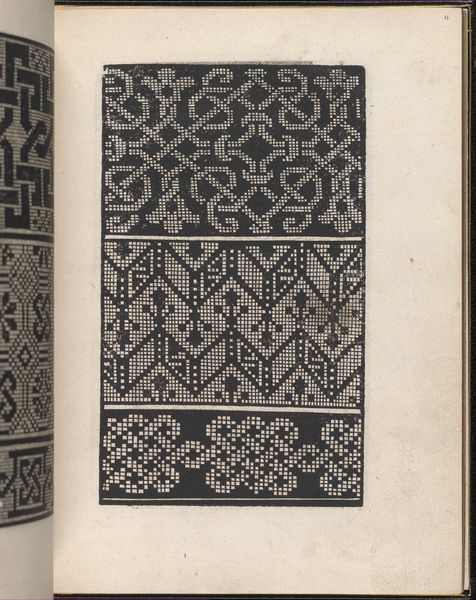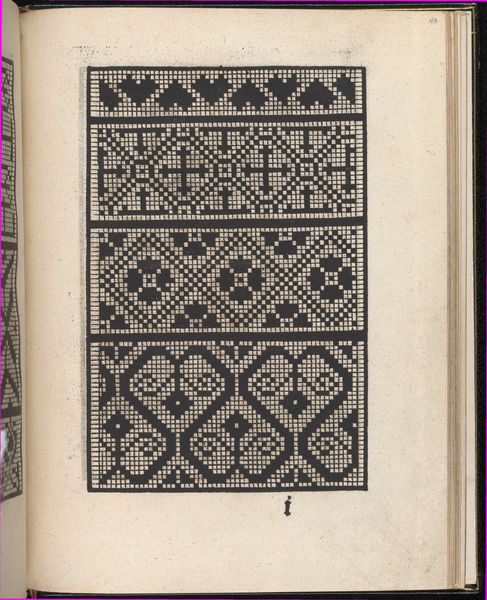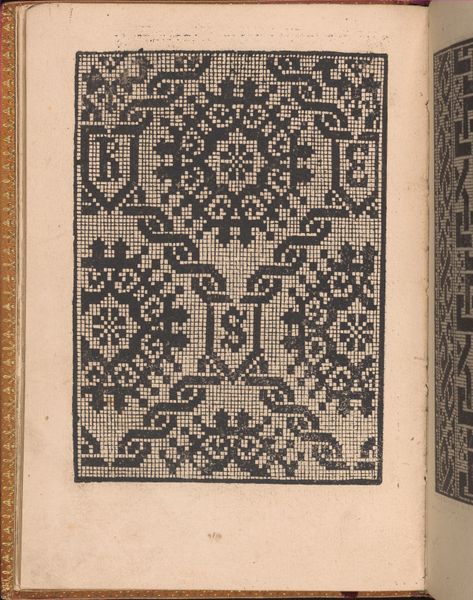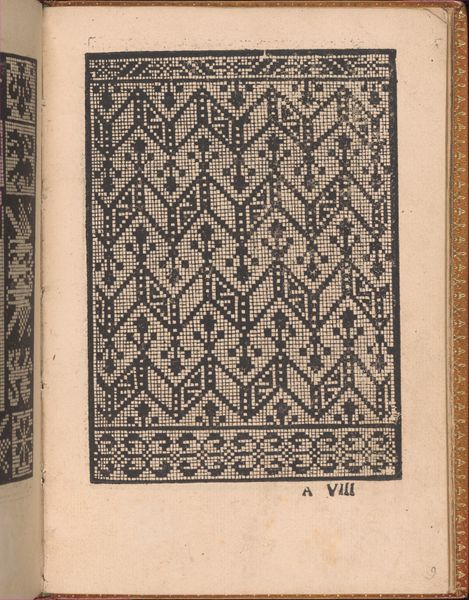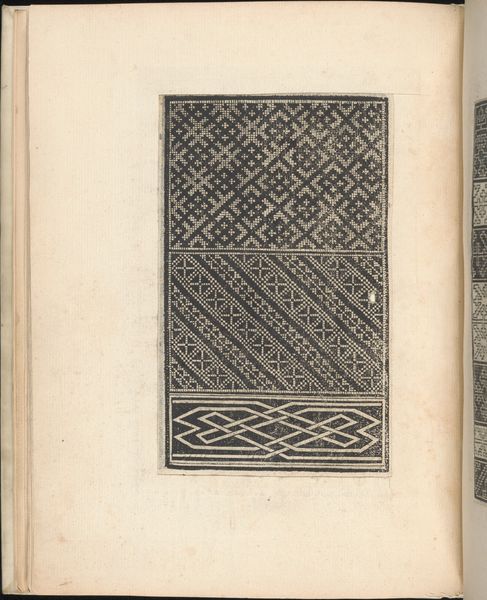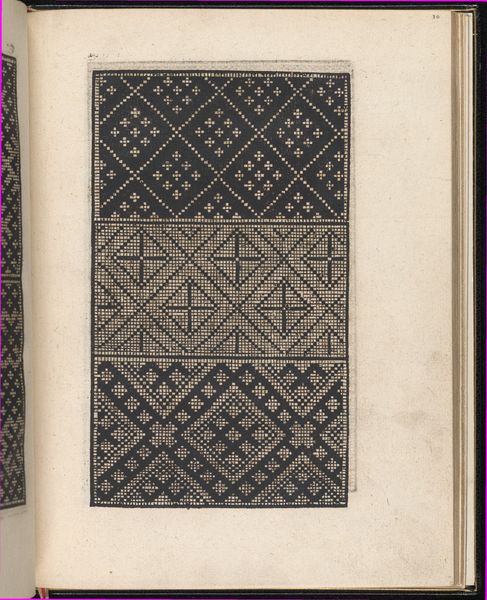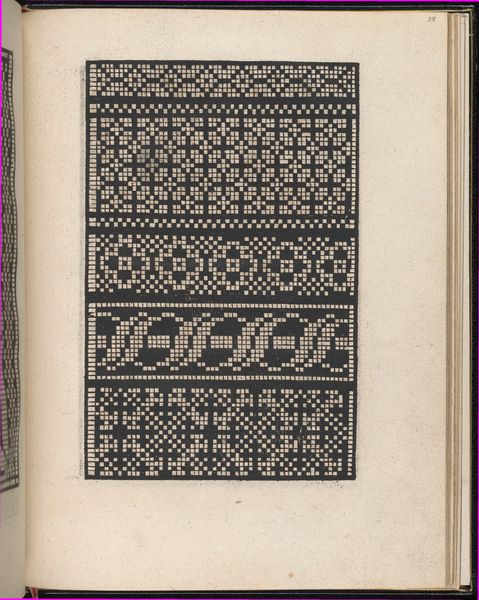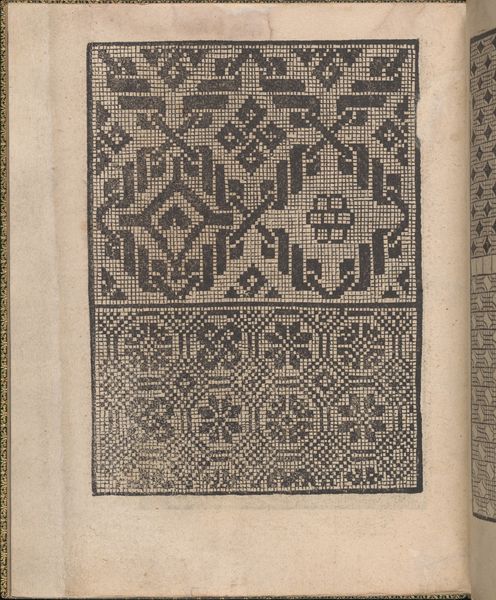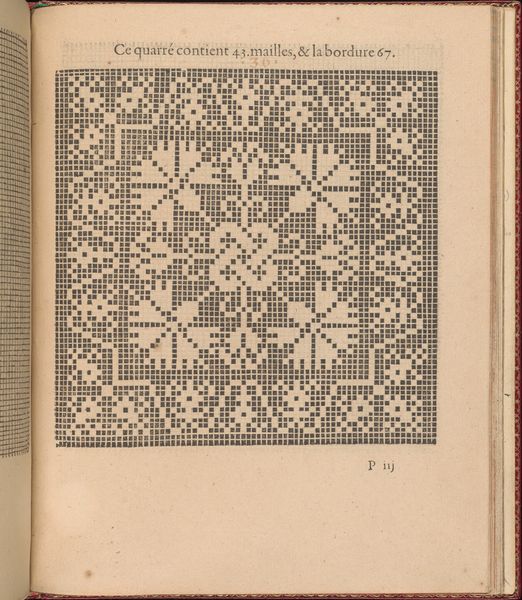
drawing, print, woodcut
#
drawing
# print
#
book
#
11_renaissance
#
woodcut
Dimensions: Overall: 7 7/8 x 5 1/2 in. (20 x 14 cm)
Copyright: Public Domain
Curator: Look at the mesmerizing intricacies in "Convivio delle Belle Donne, page 11 (recto)," a work created around 1532 by Nicolò Zoppino, here at the Metropolitan Museum of Art. It’s a woodcut, printed page from a book. The level of detail is striking. Editor: My first impression is one of hypnotic visual harmony, if that makes sense. The black and white pattern feels simultaneously calming and almost dizzying, like staring into a complex textile. There's something so familiar and grounding about its order, too. Curator: Indeed. These so-called “lace pattern books" like Zoppino's, are important for understanding the production and circulation of craft knowledge. The creation of intricate lace demanded intense skill, and these printed patterns facilitated its wider creation. Editor: Fascinating. I’m drawn to that, too. The interwoven knot motif seems universal, reflecting ideas of connection and continuity that reach back millennia and exist in a wide variety of cultures. It appears quite frequently, particularly to evoke ideas of eternal love, connection, and unity. Is that reaching too far, here? Curator: Not at all! Think of the role lace and textiles played within the domestic sphere. Their production represents a type of traditionally gendered, artisanal labor that is valuable yet consistently overlooked within canonical art history. This print brings those contributions to light and facilitates such craftsmanship in society by reproducing the image, not the piece of work itself. Editor: I see the relationship more and more, in how the pattern appears infinitely expandable, just as those qualities are meant to encompass those making it. The cultural meanings attached to clothing or textiles are also often highly personal. What did it signify to make and wear clothes during this time? This single page provokes an avalanche of questions about value! Curator: Precisely! We can contemplate both the artistry and the labor embedded within what some might dismiss as merely 'decorative.' Editor: Absolutely. A look at materials brings so much to the image and practice overall, shifting my perception significantly. Thanks to that I see far more in the page overall, how about you? Curator: And the way you illuminate the embedded symbols transforms our experience, prompting a deeper respect for not only the craft but its layered meanings.
Comments
No comments
Be the first to comment and join the conversation on the ultimate creative platform.
